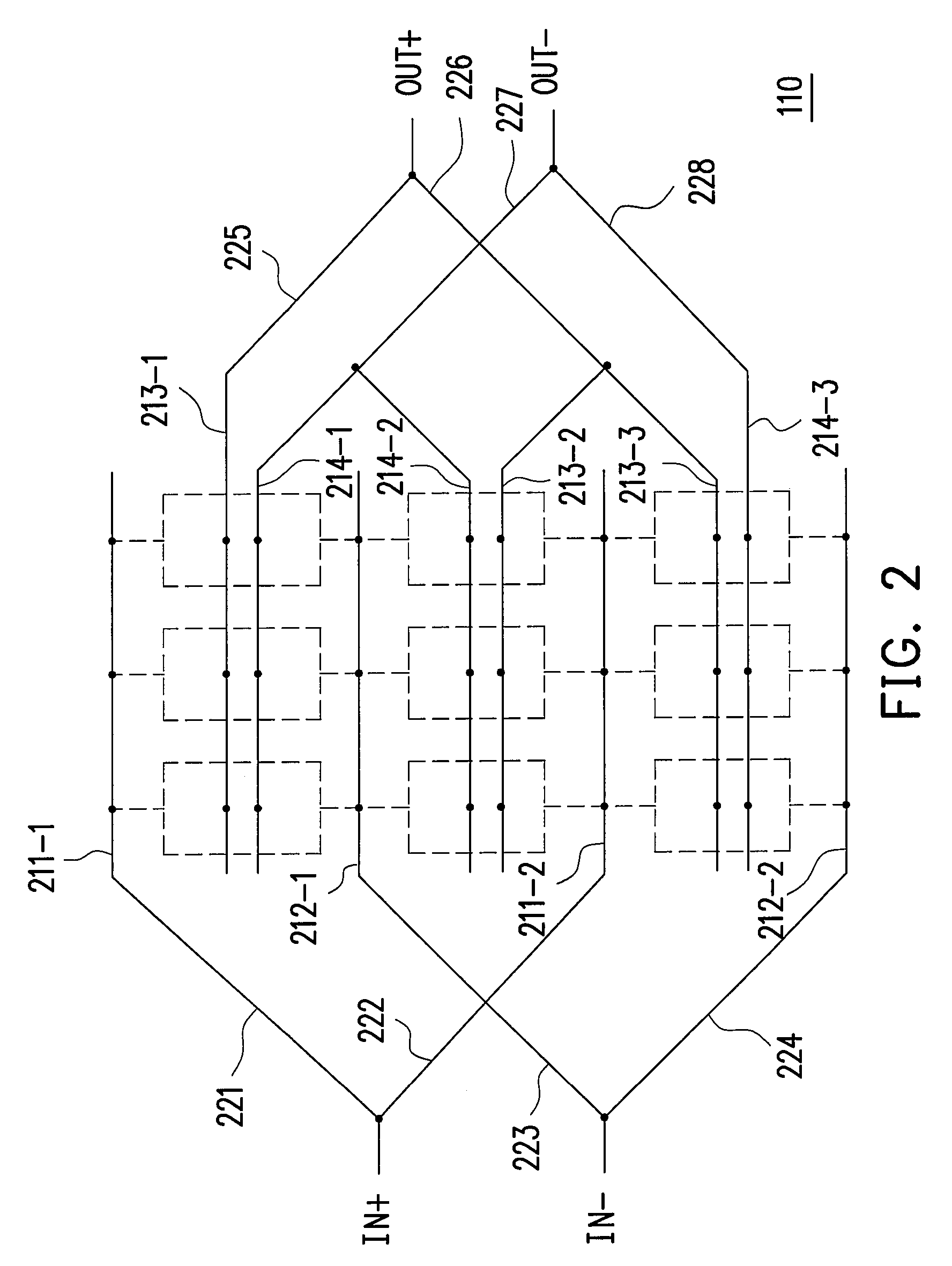Layout of power device
a power device and integrated circuit technology, applied in the direction of amplifiers with min 3 electrodes or 2 pn junctions, program control, instruments, etc., can solve the problems of affecting the performance of the power device, and affecting the performance of the remaining transistors, so as to reduce cross talk, reduce the effect of mismatch problems, and simple wiring layou
- Summary
- Abstract
- Description
- Claims
- Application Information
AI Technical Summary
Benefits of technology
Problems solved by technology
Method used
Image
Examples
Embodiment Construction
[0021]Reference will now be made in detail to the present preferred embodiments of the invention, examples of which are illustrated in the accompanying drawings. Wherever possible, the same reference numbers are used in the drawings and the description to refer to the same or like parts.
[0022]Power devices are mainly used to provide a large power-driving capability. Examples of power devices include buffer and power amplifier (PA). FIG. 1 is an application example of a power amplifier according to one embodiment of the present invention. Because differential signals have better noise rejection, most analog or radio frequency signals use a differential circuit. As shown in FIG. 1, the differential power amplifier 110 receives a differential signal pair through a first port (for example, the positive input port IN+) and a second port (for example, the negative input port IN−). After the differential signal pair is amplified, a large power differential signal pair is output through a t...
PUM
 Login to View More
Login to View More Abstract
Description
Claims
Application Information
 Login to View More
Login to View More - R&D
- Intellectual Property
- Life Sciences
- Materials
- Tech Scout
- Unparalleled Data Quality
- Higher Quality Content
- 60% Fewer Hallucinations
Browse by: Latest US Patents, China's latest patents, Technical Efficacy Thesaurus, Application Domain, Technology Topic, Popular Technical Reports.
© 2025 PatSnap. All rights reserved.Legal|Privacy policy|Modern Slavery Act Transparency Statement|Sitemap|About US| Contact US: help@patsnap.com



